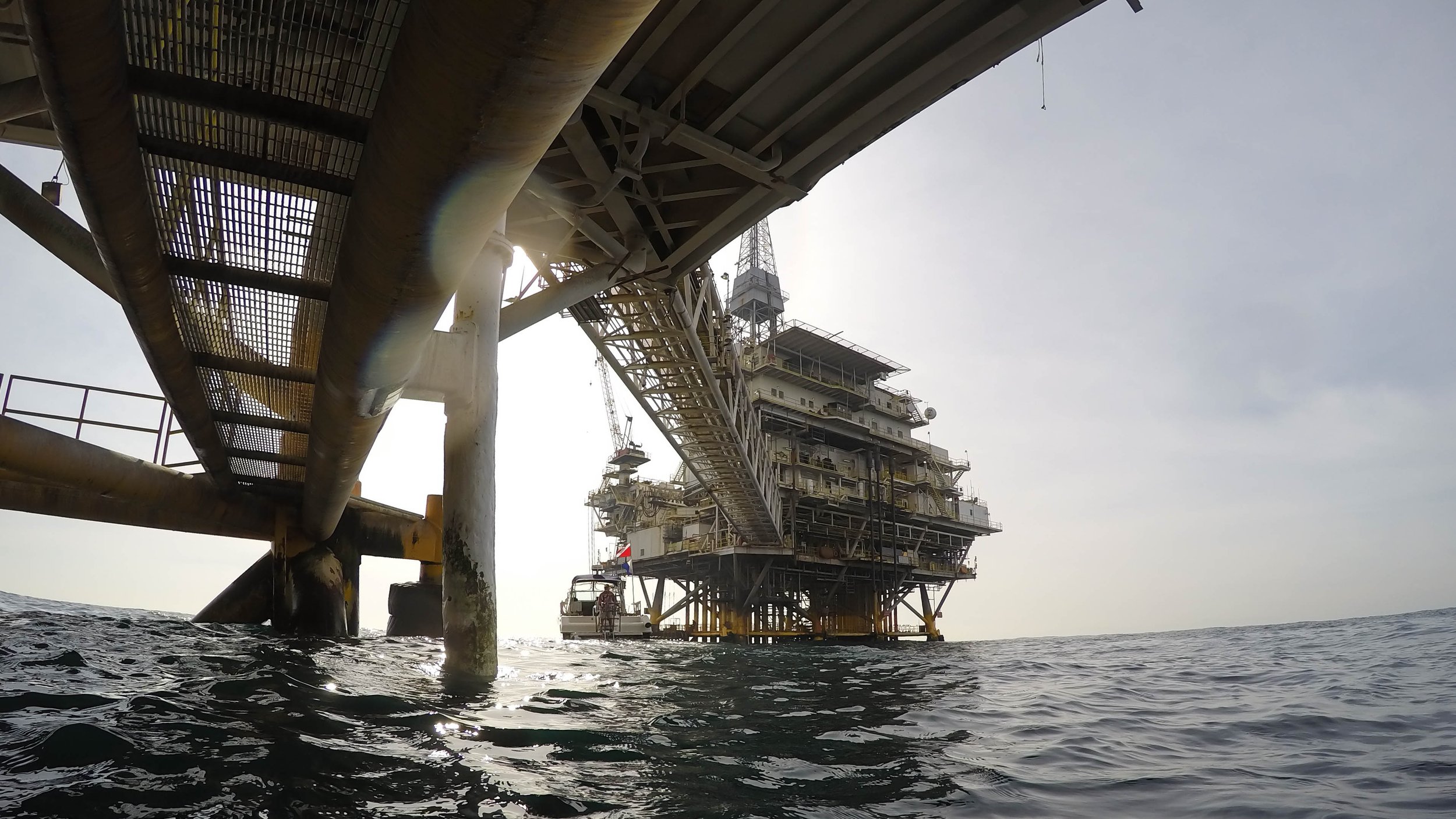
There comes a time when the useful life of an oil platform comes to an end - at least when it comes to drilling for oil.
What is Rigs to Reefs?
Rigs to Reefs provides an alternative to complete rig removal in which an oil company chooses to modify a platform so that it can continue to support marine life as an artificial reef. Through this decommissioning process, the infrastructure is made safe (e.g. wells are plugged and any residual hydrocarbons are removed) and the platform jacket is either towed, toppled in place, or the upper 85 ft is removed and the remaining structure is left in place. Not all platforms are suitable as reefing candidates, and in order for any platform to be considered for reefing, it must first undergo extensive ecological evaluations to assess any potential value it might add to the local ecosystem.
Partial Removal
Topple-in-Place
Tow-and-Place
-
The top portion of the structure is severed at a permitted navigational depth, typically 85-feet deep, and placed on the seafloor next to the base of the remaining structure. This method generally does not use explosives.
-
The structure is detached from the seafloor, either using explosives or mechanical cutting techniques, and then toppled onto its side.
-
The structure is detached from the seafloor, either using explosives or mechanical cutting techniques, and then towed to the selected reef for deployment.
“BSEE continues to support and encourage the reuse of decommissioned platform jackets as artificial reef material
— Bureau of Safety and Environmental Enforcement (BSEE)
What are the impacts on climate change?
Green house gas (GHG) emissions ranging from 5000 - 52,000 metric tons (MT) per platform are released through the process of decommissioning via complete removal. Reefing a platform can reduce GHG emissions by between 40-50%, or an estimated 13,000 GHG MTs per platform.
Oil Rigs as an artificial reef, really?
Scientific studies have concluded that the underwater platform structures has the potential to support ecologically valuable ecosystems. The complete removal of these oil and gas platforms will unquestionably harm the animals that call these structures home. As of 2021, more than 600 platforms have been converted to permanent artificial reefs in the Gulf of Mexico. Platforms converted to artificial reef continue to provide hard substrate that creates habitat and shelter for a rich diversity of marine life. In fact, an average platform provides over six acres of habitat for between 10,000 and 20,000 fish, as well as a diverse communities of corals and sponges.
“..the oil and gas platforms off California are among the most productive habitats globally.
— The National Academy of Sciences
What about material waste?
Complete removal can result in more than 30,000 tons of materials per platform that must be disposed of on land. However, through a reefing conversion, a portion (approximately 75%; or 22,500 tons) of the platform jacket is preserved as reef habitat. Reducing not only the amount of waste that needs to be recycled or disposed of on land, but also the emissions that are associated with hauling and disposing of the steel.
Costs of reefing?
Rigs to Reefs yields an economic benefit to both state and oil company stakeholders. The cost of reefing is significantly less than the alternative of complete removal; resulting in potential cost savings in the millions. However, this cost savings is not just for the operators. In most cases, half of the cost benefits to the operator are donated to the state's artificial reef program. For example, if decommissioning a structure costs $800,000 to remove, transport and scrap on shore, and reefing the structure will cut costs to $400,000, the operator would donate $200,000 to the state to assist with the management of their artificial reef program. These cost estimates are an average for structures in the Gulf of Mexico, where on-shore decommissioning facilities and processes are well-established. But in areas like California, where the onshore infrastructure to decommission is not in place, reefing can provide a much more significant cost savings. In fact, economists estimate that if 23 of California’s 27 offshore oil and gas platforms were to be reefed, there would be over a one billion dollars in saved costs.
What about liability?
Through the Rigs to Reefs process, the oil well is capped and the platform structure is modified at the expense of the oil company, so that it can continue to support marine life. In areas like the Gulf of Mexico, where Rigs to Reefs programs are established, the oil company then donates the underwater platform to the state to manage as an artificial reef, while retaining financial liability for the oil well should there be leakage. However, in states like California, the liability for the platform jacket remains undesignated; thereby creating a major block to the actualization of any reefing.



